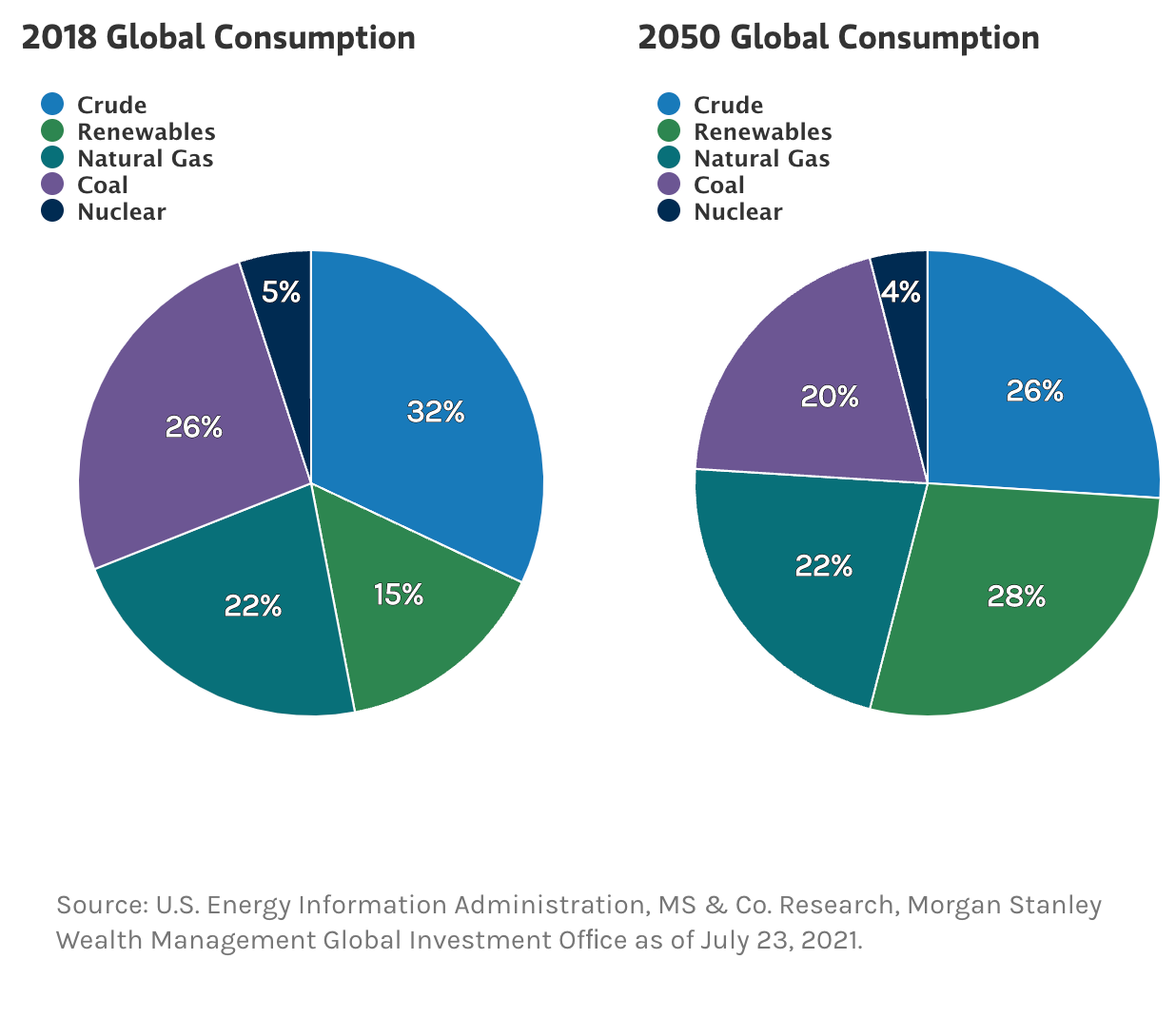Increasing demand and significant cost reductions have changed the clean energy landscape. Learn how decarbonisation efforts may present opportunities for investors.
The signs of growing interest in clean energy are easy to spot: solar panels line rooftops, wind turbines dot open plains, and electric cars cruise highways.
Less apparent, but equally important, are the economics at the center of this story: The costs to produce wind and solar energy have dropped markedly in the past decade, and demand has increased as electric utilities begin to phase out fossil fuels.
The costs to produce wind and solar energy have dropped markedly in the past decade, and demand has increased.
How could the mix of energy sources change over time? And how can investors position portfolios for a global shift toward renewables? These were some of the questions in focus during the annual AlphaCurrents conference that I recently co-hosted for Morgan Stanley Wealth Management’s Global Investment Office. Here's some of what we learned:
The Shift Toward Renewables Is Accelerating
Innovation in the energy sector is nothing new—energy consumption has changed throughout history. Most recently in the U.S., that’s been demonstrated in the decline of coal consumption and muted oil demand, while renewable sources such as wind, solar, geothermal and hydropower have grown their shares of the pie.
Globally, our strategists expect the shift toward renewables to accelerate in the years ahead, with renewable energy likely to represent 28% of global consumption by 2050, up from 15% in 2018, based on U.S. Energy Information Administration (EIA) forecasts.
Renewables Could Represent the Largest Share of Global Energy Consumption by 2050

Wind and Solar Energy Are Quickly Gaining Ground
Over the last decade, costs have dropped precipitously for the two fastest-growing types of renewable energy: solar and wind.
Solar power, for example, is gaining significant ground in two notable areas: rooftop solar panels for residential homes and solar farms built by electric utilities to replace coal-powered plants. Increased demand for solar products has fueled competition in the industry, driving costs down. In fact, solar electricity generation costs have decreased 83% since 2010.
Interestingly, wind-generated electricity costs have fallen by a similar amount—85%—assisted by a deceptively simple innovation: longer blades. In recent years, developers have successfully added longer rotor blades to both onshore and offshore wind turbines, allowing for increased energy output.

Opportunities in Decarbonisation Are Growing
Many believe climate change will be the defining issue of our time, and, so far, while government initiatives, policy and regulation have driven progress, going forward, the pace and success of decarbonisation may increasingly depend on the private sector. With more companies pledging to address climate risk, investment opportunities around decarbonisation have grown. These opportunities aren’t just limited to the energy sector, either—to varying degrees almost all industries globally likely will be affected.
For climate-conscious investors, consider looking across the energy supply and production landscape. For example, investors may find compelling opportunities in:
- Pure-play clean tech firms directly involved in renewable energy technology or production
- Electric utilities that are transitioning away from fossil fuels and toward cleaner generation
- Oil and gas companies that are investing in cleaner production, either through carbon capture or by diversifying production through renewables
While our strategists see strong growth potential for opportunities in renewables, investing in the space is not without risk. Growth for the sector assumes technological advancement, large-scale private investment and continued policy support from governments around the world.
Questions to Ask Your Morgan Stanley Financial Advisor:
- How can I position my portfolio for the global shift toward renewable energy?
- What investment opportunities in energy supply and production might make sense for me?
- Are there stocks or funds that would help me gain exposure to the trend toward cleaner energy?
You can find out more in our team’s AlphaCurrents report, “Future of Energy—Investing in Decarbonisation.” Connect with your Morgan Stanley Financial Advisor to request a copy or discuss how your portfolio might benefit from the renewable energy transition. Plus, more Ideas from Morgan Stanley's thought leaders.



